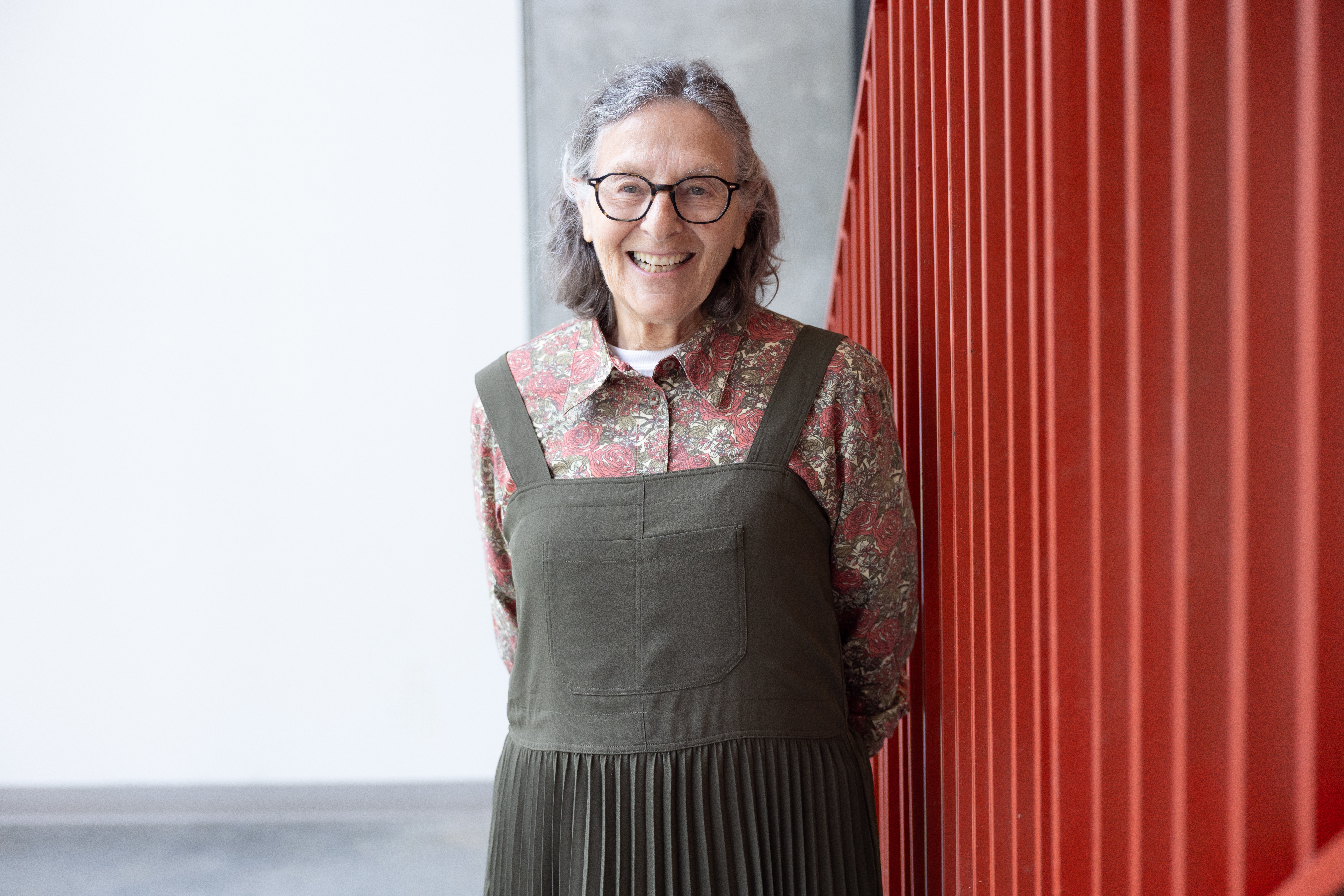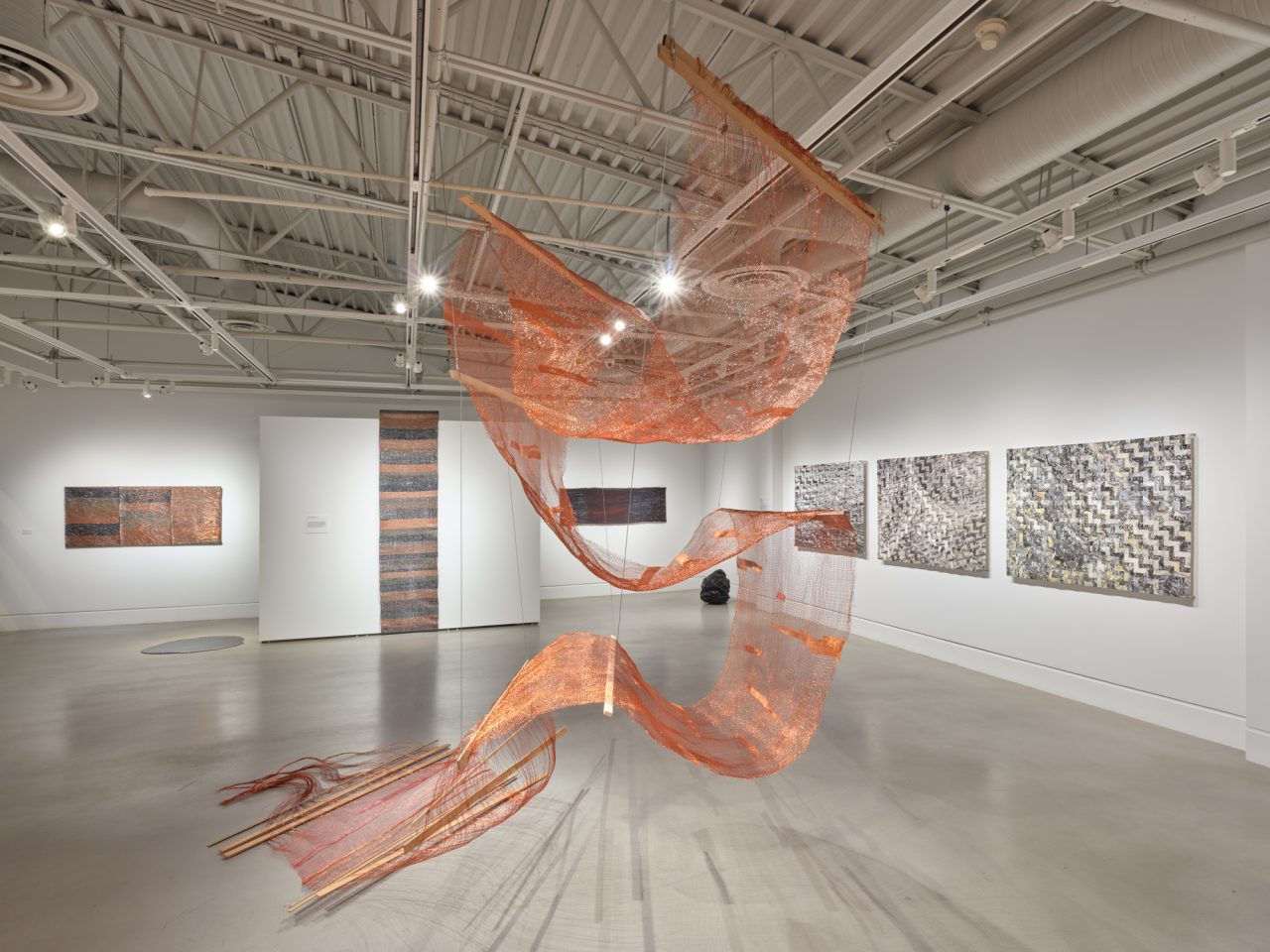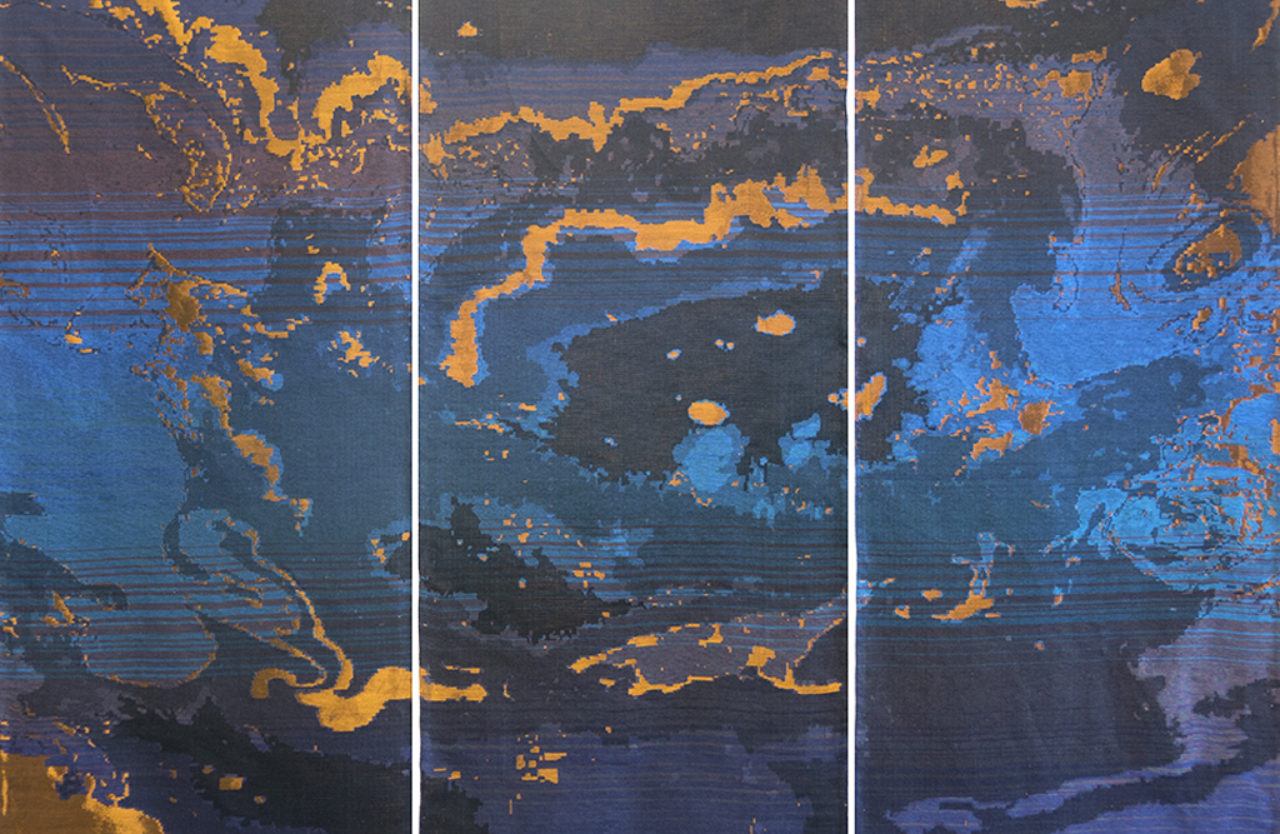Ruth Beer Awarded $368K SSHRC Grant for ‘Land Sea Sky’

Artist and ECU faculty member Dr. Ruth Beer at ECU. (Photo by Perrin Grauer)
Posted on | Updated
The four-year research-creation project aims to unpack the ways digital infrastructures impact cultures and landscapes in remote communities.
Artist and Emily Carr University of Art + Design (ECU) faculty member Dr. Ruth Beer has been awarded a Social Sciences and Humanities Research Council (SSHRC) Insight Grant of more than $368,000 for a new interdisciplinary project exploring the shifting realities of northern and rural digital infrastructures.
Over four years, Land, Sea, Sky: Digital Infrastructure and Transition in Northern Landscapes and Communities will conduct research to unpack the ways accelerating internet connectivity affects communities, cultures, economies and environments in locations including in Canada’s most westerly, northern and easterly coastal communities, with research sites in Skidegate on Haida Gwaii, Inuvik in the Northwest Territories and St. John’s, Newfoundland and Labrador.
“We often hear about the ways the internet impacts young people, our wellbeing and our understanding of the world. And that’s very important. But what's not often examined is what the internet is physically, materially. How is digital connectivity delivered through infrastructure, including fibre-optic cables, Low Earth Orbit satellites and data centres? They have significant physical impacts on the land, the water and the skies. Their materiality – even on its own – is changing our societies and the world we live in,” Ruth says.
“Like oil pipelines, which remain invisible to us when we fill our gas tanks, these digital infrastructures can escape our notice. Their physicality, installation and use of resources such as energy and water come at a cost, and they are an incredibly powerful agent of change. To study these infrastructures and their potential is to have a new understanding of place. With Land Sea Sky, our intention is to study and highlight these new understandings of place through community engagement, creative practices such as visual art and media, as well as publications.”

Ruth has completed numerous SSHRC-funded projects in the past, many of which were showcased as part of a pair of major solo exhibitions co-presented in 2025 by the Burnaby Art Gallery and the Art Gallery at Evergreen, titled Ruth Beer: Seep | Swell. (Photo by Rachel Topham Photography / courtesy Ruth Beer)
Beginning in 2025, the project will move through several phases, including research, community building, and the production of artworks, articles, exhibitions, a book and a symposium. These activities will be informed by a series of week-long workshops held onsite in our research sites, where the team will engage local communities, including Indigenous leaders for collaborative exchange and co-creation.
Working with a team of artists, curators, academics, scholars, designers, researchers, Indigenous knowledge keepers and local community members, Land Sea Sky aims to shed light on impacts of digital infrastructure “on the lives of those who use it, the places in which it is physically located and the people who work to maintain it.”
In uncovering how the transition from relative disconnectivity to hyperconnectivity is perceived and experienced, Ruth says the team also hopes to explore how these digital infrastructures provide a window onto the ways communities conceive of issues related to a sense of place, sovereignty, identity and future imaginaries.
“By collaborating directly with our community partners, we’re hoping to promote dialogue and working relationships among local organizations,” Ruth says. “We’re also hoping to help facilitate stronger connections between northern cultural institutions, support community mandates and benefit policymakers with nuanced representation of these complex issues.”

Other multi-year research-creation projects such as Shifting Ground, Catch and Release, and Trading Routes have produced outcomes including publications, exhibitions, symposia and artworks, such as States of Matter, 2016/17. (Installation view from exhibition at The Reach, Abbotsford, BC). (Image courtesy Ruth Beer).
Land Sea Sky is supported by co-investigators from universities across Canada, including artist and ECU faculty member Lindsay McIntyre. The project is also supported by over a half dozen international collaborators from the UK, Finland, the US as well as more local collaborators on Haida Gwaii and in the Yukon, including artist and ECU alum Jeneen Frei Njootli (BFA 2012).
In addition, Land Sea Sky will employ several students per year as research assistants (RAs), offering mentorship and training as well as opportunities to contribute to publications and exhibitions.
“Our student RAs will develop skills in a wide array of experiences including data collection, collaborative and participatory research methods, and research-creation production methods. Meanwhile, they’ll gain exposure to new materials, media, techniques and processes,” Ruth says. “Land Sea Sky will also provide RAs with significant opportunities to build their professional experience by co-authoring publications and participating in exhibitions. Our aim is to model ethical ways of working and establish networks of correspondence that emerging practitioners can take forward into their future practices.”
Visit Ruth’s website and read our recent feature article on her work to learn more about her practice.